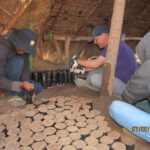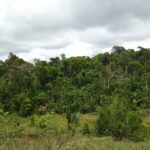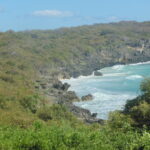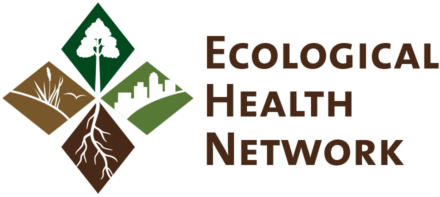Madagascar Research and Conservation Program, Missouri Botanical Garden
Location
Madagascar
Category
Hub
Ecosystems
Low- and mid-elevation evergreen humid forest; Dry deciduous forest
Land Tenure
State lands; Protected areas recognized by the Malagasy government
Contacts
Chris Birkinshaw and Jeannie Raharimampionona, Missouri Botanical Garden-Africa & Madagascar Program
Website
The island nation of Madagascar is one of the hottest biodiversity hotspots on Earth due to the richness and endemism of its flora and fauna and the huge threats that both are facing. Sadly, Madagascar’s unique ecosystems are under extreme anthropogenic and climate-related stress, with several forest ecosystems at risk of being lost entirely. It is estimated that more than 80% of the island’s original native forest cover has been destroyed, with an additional 120,000 hectares disappearing annually as a result of slash-and-burn farming and extractive activities (mining, logging, etc.). Long-term conservation of these imperiled ecosystems—and in many cases, ecological restoration of lost or severely degraded forests—is now urgent, both to ensure habitat for locally endemic species and to safeguard natural resources for local communities who depend on them directly for their subsistence livelihoods.
Missouri Botanical Garden's Longstanding Conservation Work
The Missouri Botanical Garden (MBG) has been working in Madagascar for nearly four decades to discover the remarkable and poorly known Malagasy flora; and for the last 16 years, the Garden has supported community-based conservation at Priority Areas for Plant Conservation throughout the country, which now number 11 sites. The Garden has had a permanent presence in Madagascar since the early 1980s and now has a local permanent staff of 60, of which almost all are Malagasy. The full team numbers over 170 people of all employment types.
Key elements of the research and conservation program include: supporting the sustainable use of natural resources in Priority Areas; increasing the natural capital of these areas and their peripheral zones through a variety of conservation and restoration measures and practices; and promoting awareness, empowerment, and capacity building of local stakeholders to help address underlying socio-economic challenges and to carry out the required conservation work including restoration initiatives.
Madagascar EcoHealth Hub
Five of the MBG sites have been linked together to form an EcoHealth Hub, as an added means of increasing on-the-ground impact and facilitating their participation in the global EcoHealth Network. The Madagascar EcoHealth Hub aims to amplify and enhance the ecological restoration efforts underway at the MBG sites, while also helping to increase the effectiveness and extent of restoration efforts in other parts of Madagascar and elsewhere in the world. The Hub provides a platform through which to strengthen communication about the objectives and benefits of local restoration efforts, develop new ideas and approaches for sustainable development, advance ecohealth research locally and internationally, and ultimately achieve better outcomes for biodiversity and human well-being. It also provides an avenue through which local projects can engage internationally and share lessons from Madagascar with the wider EcoHealth Network, and vice versa.
The five sites comprising the Madagascar Hub are described below. (follow the links for details about each site)
 Analalava Forest
Analalava Forest
Location: central-eastern Antsinanana Region
Vegetation: low-elevation evergreen forest
Size: 209 hectares
Date of initiation: 2006
 Ankafobe Forest New Protected Area and Andranofeno-Sud Model EcoHealth Village
Ankafobe Forest New Protected Area and Andranofeno-Sud Model EcoHealth Village
Location: Analamanga Region of the central highlands
Vegetation: mid-elevation evergreen humid forest and grassland
Size: 135 hectares
Date of initiation: 2004
 Ankarabolava-Agnakatrika Forest New Protected Area
Ankarabolava-Agnakatrika Forest New Protected Area
Location: Atsimo-Atsinanana Region in the southeastern Vangaindrano District
Vegetation: low-elevation evergreen humid forest on basalt
Size: 1,562 hectares
Date of initiation: 2007
 Oronjia Forest New Protected Area
Oronjia Forest New Protected Area
Location: Diana Region on the far northeastern coast, overlooking Antsiranana Bay
Vegetation: dry deciduous forest on sand and calcareous rock
Size: 1,648 hectares
Date of initiation: 2007
Vohibe Forest New Protected Area
Location: Atsinanana Region on Madagascar's Great Eastern Escarpment
Vegetation: low- to mid-elevation evergreen humid forest
Size: 3,117 hectares
Date of initiation: 2006


